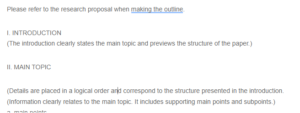The Impact of Web-Based Learning on Students Achievement and Motivation
INTRODUCTION
Online learning boosts learners’ motivation and collaboration, hence improving their academic performance. Web learning promotes student engagement rates by encouraging students to take control of their learning and increasing their commitment to studying. Through online learning, students tend to be more motivated to learn because of the collaborative nature that comes with it, hence improving student performance. Therefore, this paper will analyze how web learning motivates students to learn, improves learners’ collaborative efforts, and leads to improved performance.
MAIN TOPIC
Main Point 1: Online learning boosts learners’ motivation, collaboration, and performance.
Most students who use online platforms to understand tend to be more motivated because they make personal decisions about their learning.
When learners show high motivation levels, they tend to improve in performance.
Main Point 2: Online classes can better engage students, boosting their retention rates by approximately 60% (Wang &Wu, 2018). This is because online courses increase student collaboration to solve problems.
Web learning offers flexibility and allows students to share their ideas freely, grasping and understanding concepts easily (Al-Hattami, 2020).
Main Point 3: Through web-based learning, learners are free to share information, thereby increasing their creativity through sharing ideas.
Students can easily help each other through learning online, encouraging others to perform well.
This learning also involves the free sharing of thoughts, ideas, and opinions in a free manner.
CONCLUSION
Since the introduction of web learning, students’ rate of motivation to learn has improved. Students can engage and share information, boosting each other’s level of grasping knowledge (Abou El-Seoud et al., 2014). However, there needs to be more literature to support how far the education systems across the globe can incorporate technologies and meet the needs of all students. Therefore, I recommend that future research investigate technology coverage rates in education globally. Another recommendation is for future research to focus on strategies that stakeholders can implement to ensure students use online platforms for their rightful purposes only.
REFERENCES
Source 1
Abou El-Seoud, M. S., Taj-Eddin, I. A., Seddiek, N., El-Khouly, M. M., & Nosseir, A. (2014). E-learning and students’ motivation: A research study on the effect of e-learning on higher education. International Journal of Emerging Technologies in Learning (Online), 9(4), 20.
Source 2
Al-Hattami, A. A. (2020). E-Assessment of students’ performance during the E-Teaching and learning. International Journal of Advanced Science and Technology, 29(8), 1537-1547.
Source 3
Wang, S. L., & Wu, P. Y. (2018). The role of feedback and self-efficacy on web-based learning: The social cognitive perspective. Computers & Education, 51(4), 1589-1598.
ORDER A PLAGIARISM-FREE PAPER HERE
We’ll write everything from scratch
Question
Please refer to the research proposal when making the outline.
I. INTRODUCTION
(The introduction clearly states the main topic and previews the structure of the paper.)

The Impact of Web-Based Learning on Students Achievement and Motivation
II. MAIN TOPIC
(Details are placed in a logical order and correspond to the structure presented in the introduction.
(Information clearly relates to the main topic. It includes supporting main points and subpoints.)
a. main points
b. main points
c. main points
III. CONCLUSION
(The conclusion should effectively summarize the discussion and provide at least two recommendations for further research.)
VI. REFERENCES
(All sources (information and graphics) are accurately documented in APA)
a. Source 1
b. Source 2
c. Source 3


